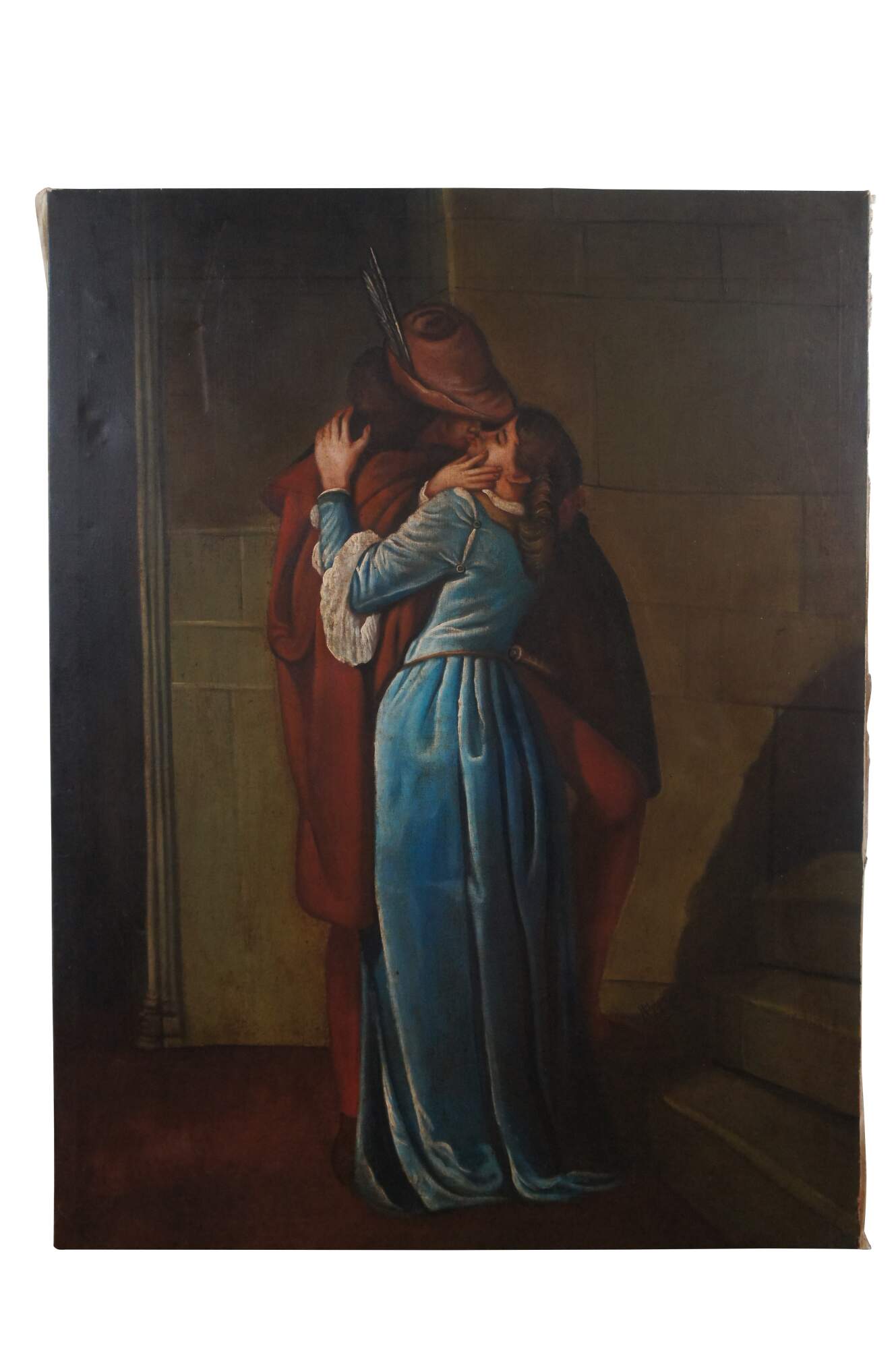
Shipping:
Free Shipping Included
Delivery:
Estimated 2-15 Business Days
Payments:
Credit Card, Check, Cash, PayPal, Apple Pay, Venmo
Returns:
30 Days 100% Money Back Guarantee, Buyer Pays Return Shipping
Description
Vintage reproduction painting on linen by Hidalgo featuring The Kiss by Francesco Heyez.
Il bacio (Italian pronunciation: [il ˈbaːtʃo]; The Kiss) is an 1859 painting by the Italian artist Francesco Hayez. It is possibly his best-known work. This painting conveys the main features of Italian Romanticism and has come to represent the spirit of the Risorgimento. It was commissioned by Alfonso Maria Visconti di Saliceto, who donated it to the Pinacoteca di Brera after his death.
Historical context
After the defeat of Napoleonic France in the 19th century, the Congress of Vienna was held in 1815 to redraw the map of Europe. Italy had a very marginal role compared to other European countries and was slated to be divided into several states. Every state was either ruled directly, or strongly influenced, by the Habsburgs of the Austrian Empire. That fragmentation went against the growing nationalist sentiment for Italy's unification, and caused the creation of secret societies with democratic-radical orientations, such as the Carboneria and Young Italy. Although those associations were unsuccessful, their role was fundamental in shaping public opinion.
The first war of Italian independence (1848) was a failure but, by 1859, the secret agreement between Napoleon III and Camillo Benso, Count of Cavour stipulated the formation of an anti-Austrian alliance. The contribution of France was considered crucial, because the Austrian armies were defeated by the alliance in the Kingdom of Lombardy–Venetia. That victory initiated the unification process, and the Kingdom of Italy was proclaimed a few years later, in 1861.
It was during that period that Francesco Hayez painted The Kiss. Mindful of the bloody repression of the nationalist movement, the artist decided to disguise the ideals of conspiracy and the struggle against the invaders under a representation of past events. The use of ambiguous, opaque metaphors allowed the artist to avoid censorship by the authorities.
Condition
Good Overall - Some dents in canvas; gentle wear
Dimensions
38.5" x 0.75" x 50" (Width x Depth x Height)
You May Also Like